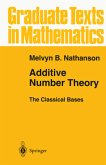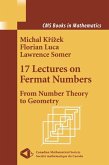This book is designed for a topics course in computational number theory. It is based around a number of difficult old problems that live at the interface of analysis and number theory. Some of these problems are the following: The Integer Chebyshev Problem. Find a nonzero polynomial of degree n with integer eoeffieients that has smallest possible supremum norm on the unit interval. Littlewood's Problem. Find a polynomial of degree n with eoeffieients in the set { + 1, -I} that has smallest possible supremum norm on the unit disko The Prouhet-Tarry-Escott Problem. Find a polynomial with integer co effieients that is divisible by (z - l)n and has smallest possible 1 norm. (That 1 is, the sum of the absolute values of the eoeffieients is minimal.) Lehmer's Problem. Show that any monie polynomial p, p(O) i- 0, with in teger coefficients that is irreducible and that is not a cyclotomic polynomial has Mahler measure at least 1.1762 .... All of the above problems are at least forty years old; all are presumably very hard, certainly none are completely solved; and alllend themselves to extensive computational explorations. The techniques for tackling these problems are various and include proba bilistic methods, combinatorial methods, "the circle method," and Diophantine and analytic techniques. Computationally, the main tool is the LLL algorithm for finding small vectors in a lattice. The book is intended as an introduction to a diverse collection of techniques.
From the reviews: MAA ONLINE "Explanations are thorough but not easy to understand. Nevertheless, they can be understood by the determined graduate student in mathematics. However, the ideal mix would be a collection of mathematics and computer science students, as the level of computer expertise needed to code the solutions to the problems is at the upper division level...Research mathematicians often need to be able to write code to attack specific problems when no appropriate software tool is available. This book is ideal for a course designed to teach graduate students how to do that as long as they have or can obtain the necessary programming knowledge."








